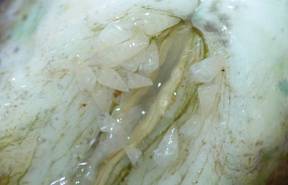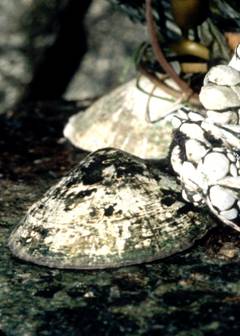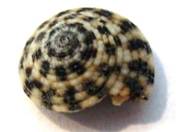|
Related FAQs: Marine Invertebrates, Marine Invert.s 2,
Marine Invert.s 3, Non-Vert IDs 1, Non-Vert IDs 2, Non-Vert IDs 3, Non-Vert IDs 4, Non-Vert IDs 5, Non-Vert IDs 6, Non-Vert IDs 7, Non-Vert IDs 8, Non-Vert IDs 9, Non-Vert IDs 10, Non-Vert IDs11, Non-Vert IDs 12, Non-Vert IDs 13, Non-Vert IDs 14, Non-Vert IDs 15, Non-Vert IDs 16, Non-Vert IDs 17, Non-Vert IDs 18, Non-Vert. ID 19, Non-Vert. ID 20, Non-Vert. ID 21,
Non-Vert.
ID 25, Non-Vert ID 26,
Non-Vert ID 27, Non-Vert ID 28, Non-Vert ID 29, Non-Vert ID 30 Non-Vert ID 31, Non-Vert ID 32, Non-Vert 33, Non-Vert ID 34, Non-Vert ID 35, Non-Vert ID 36, Non-Vert ID 37, Non-Vert ID 38, Non-Vert ID 39, Non-Vert ID 40, Non-Vert ID 41, Non-Vert ID 42, & FAQs
about: Marine Invertebrate
Behavior, Marine
Invertebrate Compatibility, Marine Invertebrate Selection,
Marine Invertebrate
Systems, Feeding Reef
Invertebrates, Marine
Invertebrate Disease, Marine Invertebrate
Reproduction, &
Quarantine of Corals and
Invertebrates, Feeding Reef Invertebrates,
Lighting Marine
Invertebrates, Marine
Plankton, Marine
Microbes, Marine Virus,
Marine Bacteria, Marine Funguses, Marine Protozoans, Marine Plankton, Live Rock,
Related Articles:
Marine Virology, Marine Bacteria, Marine Mycology, Marine Protozoans, Invertebrates, Marine Plankton, Live Rock, Live Sand, Sponges (Porifera), Stinging-Celled Animals (Cnidaria),
Worm Groups, Mollusks (Snails, Bivalves, Octopus...),
Pycnogonids (Sea Spiders),
Jointed-Legged
Animals (Arthropods), Bryozoans/Ectoprocts, Spiny-Skinned Animals
(Echinoderms), Water Flow, How Much
is Enough,
/The
Conscientious Reef Aquarist
The Pros & Cons of
Hitchhikers in the Reef Aquarium, part 3
To: Part 1,
Part 2, Part 4,
|
|
|
By Bob Fenner
|
|
 |
|
\
|
Red and more clear small pest flatworms on hard
(Scleractinian) and soft corals can be debilitating if your
livestock is otherwise compromised or if theyre in too
great a number (Waminoa here on a Plerogyra in the wild,
the brownish one in captivity is said to be
Convolutriloba retrogemma). Another clearish
species infests the genus Acropora. Both cause damage by
shading out light and likely feeding on the corals
endosymbiotic algae (zooxanthellae). Look for tissue loss
and brownish egg masses.
Best avoided through quarantine,
possible pH-adjusted freshwater Dips/Baths. Biological
controls possibly include some small wrasses of the genera
Pseudocheilinus,
Halichoeres and
Macropharyngodon;
Callionymids/Psychedelic gobies, and Headshield Slugs of
the genus Chelidonura.
|
|
 |
|
|
|
Pyramidellid
snails, as their name implies are conically shaped
usually white and only a few millimetres in length. These
are principally problems with Giant Clams, Tridacnid
species, feeding on their mantles by night, hiding out
around their bases/byssus by day. Detection is easy with a
sharp eye and a flashlight during the evening, and your
Clam/s may show evidence of damage, not-opening during the
day. Removal and brushing of the entire shell (outside the
system of course) is the suggested means of controlling
these pests. The Banana and Green Wrasses of the genus
Halichoeres (H. hortulanus and H.
chloropterus), and smaller lined wrasses (genus Pseudocheilinus are
good predators of Pyramidellids.
Right: An infested Clam and the
Eight Line Wrasse (P. octotaenia).
|


|
|
|

|
Box
snails,
Tulip Snails,
Limpets and so many more
predatory snails are generally large enough to be seen and
best removed physically if/when detected if causing
trouble. Do be on the look-out for their egg masses and
remove these promptly as well.
Shown: At left a really big Limpet,
Lottia gigantea off the coast in San Diego,
Calif.
Below: A Sundial Snail common predator
hitchhiker on Zoanthids.

|
|
 |
To: Part 1, Part 2, Part
4,
|
|

